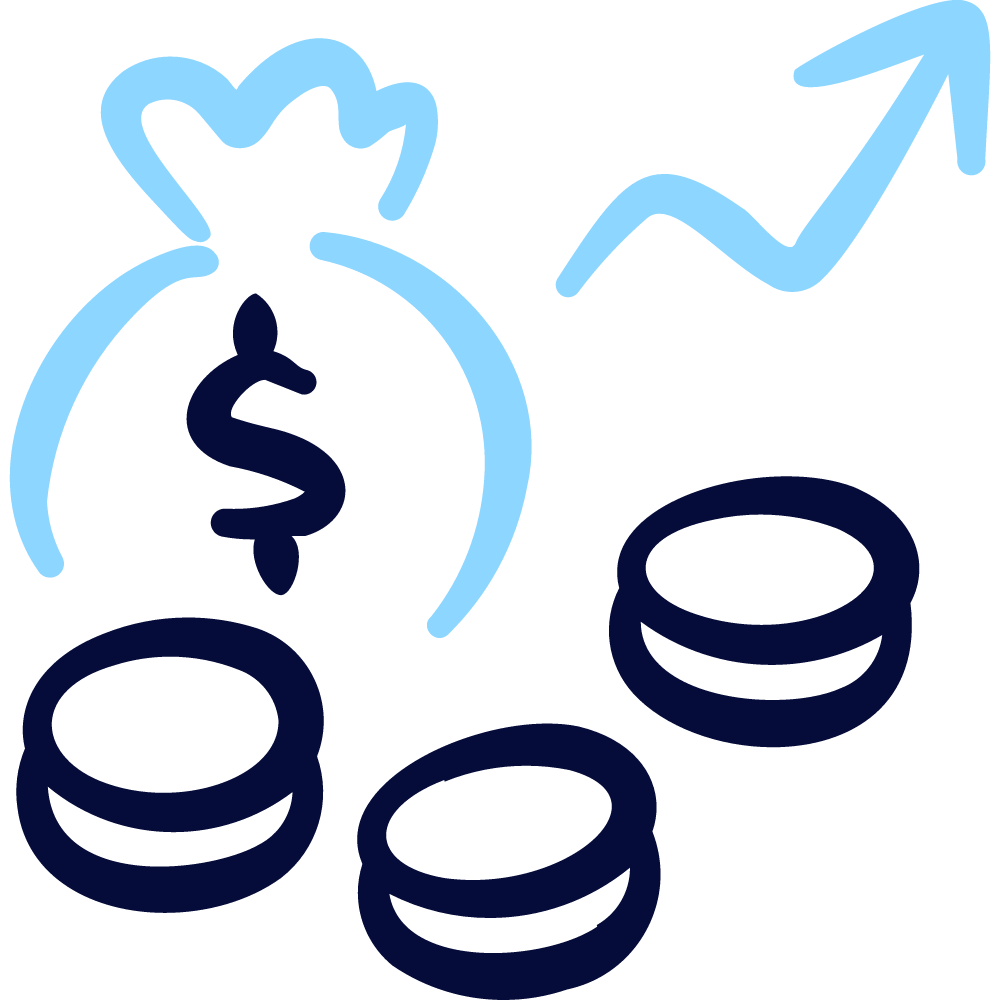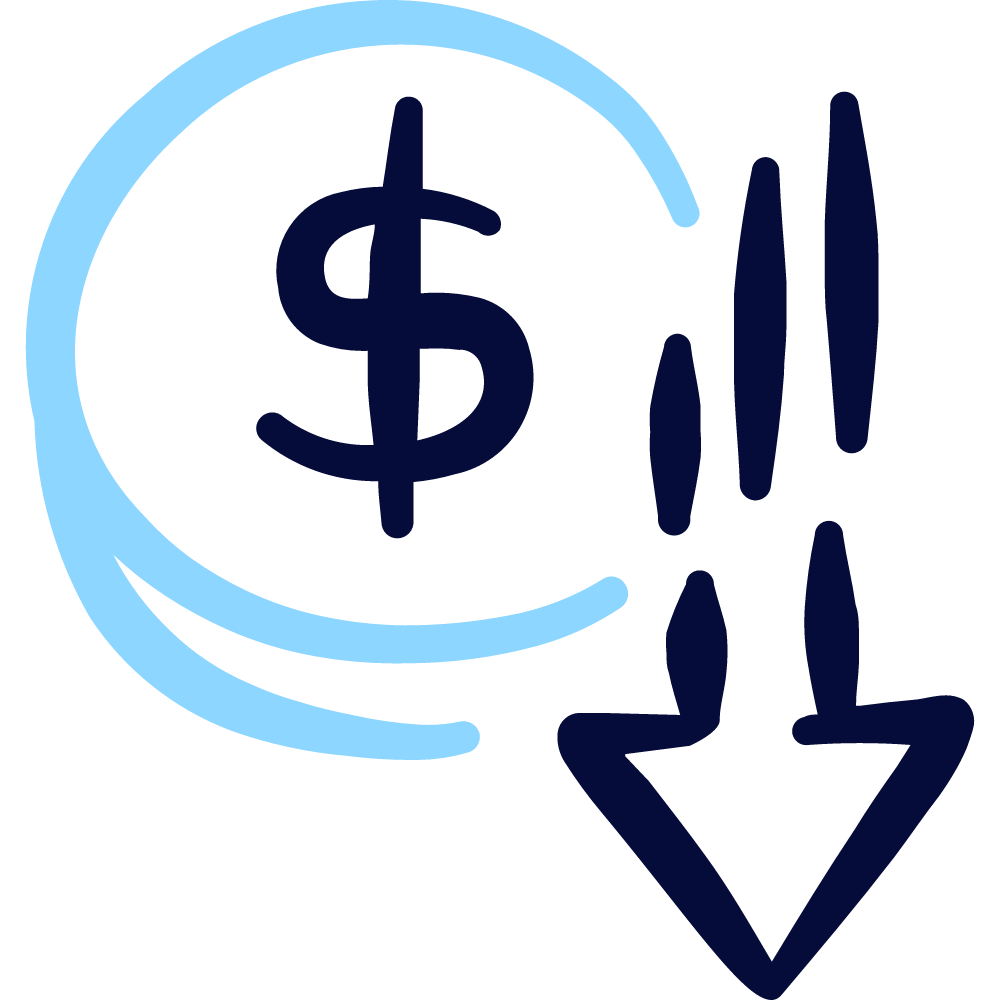Why Invest for Dividends?
Benefits of Dividend Investing
Now that you know the basics about dividends, next, we delve into the powerful Benefits of Dividend Investing. Here we focus specifically on how receiving regular payments can transform your financial journey. You’ll discover how dividends can provide a steady stream of passive income, act as a buffer against market volatility, and accelerate your wealth-building through the magic of compounding.

For beginners, understanding these key advantages is the first step toward building a resilient and profitable portfolio. Become a dividend expert with our Complete Guide to Dividend Investing.
Building a Passive Income Stream with Stocks
Benefits of Dividend Investing

Easy to Start
Unlike many other forms of investing, there is a low dollar amount required to become a dividend investor. If you can afford to buy shares of a dividend-paying stock, you can invest for dividends.

Compounding Growth
If you reinvest the money you make from dividends, you allow that money to make even more money. Thereby creating a cycle of exponential growth over time.

Generating Passive Income
Dividends allow you to earn income simply by owning a stock. Furthermore, this income is likely to increase over time if the company increases the dividend payment, the share price goes up, or you accumulate additional shares.

Safety in a Declining Market
In a stock selloff, the dividend will provide support for the stock’s price. As the price declines, the dividend yield increases. That means you are paying less and less for the right to the dividend payment in the future. Dividends won’t keep a stock’s price from fluctuating, but they will allow you to continue to generate some sort of return even if the stock’s price declines.

Emotional Connection
All things being equal, many investors prefer to invest in a company that allows them to participate in its profits directly. Very often, investors are less likely to sell their shares when the price declines. This keeps you from locking in a potential loss and positions you to participate in a rebound.

Inflation Hedge
Historically, dividends have outpaced inflation. Over the past 150 years, inflation has grown at a rate of 2% per year, but dividends paid by U.S. companies have grown 3.7% per year. This is a significant benefit to investors as it provides a way to overcome the loss of purchasing power resulting from inflation.

Financial Stability and Strength
Dividends are a clear message that a company has solid prospects for the future. Simply by being willing to pay a consistent dividend, the company is indicating that it feels confident about its financial health and potential for strong performance over time. Most companies won’t implement a dividend policy if they don’t believe they can support the payment indefinitely.

Attract and Retain Shareholders
Some money managers require dividend payments. Paying dividends is a good use of a company’s extra cash. The commitment to paying a regular dividend shows a higher level of demonstrated discipline that implies a company is less likely to waste money and take on excessive debt.
Common Mistakes of Dividend Investing
Understanding the most common dividend investing mistakes is critical for long-term success. By learning to avoid these pitfalls, you can build a more durable and reliable portfolio designed to deliver sustainable results.

Chasing High Dividend Yields:
A very high dividend yield can be a red flag, often indicating that a company’s stock price has dropped significantly due to underlying financial problems. These are sometimes called “dividend traps,” where a company might be unable to sustain the high payout, leading to a dividend cut and a further decline in stock price.

Ignoring a Company’s Fundamentals:
A company’s ability to pay a dividend depends on its financial health. Investors who only look at the dividend amount and not at metrics like the payout ratio, free cash flow, debt levels, and future growth prospects risk investing in a company that may be forced to reduce or eliminate its dividend.

Lack of Diversification:
Dividend-paying stocks are often concentrated in specific sectors, such as utilities, consumer staples, and real estate. Focusing too heavily on these companies can lead to a portfolio that is not well-diversified, making it vulnerable to downturns in those particular industries.

Overlooking Tax Implications:
Dividends are considered taxable income. Depending on the type of dividend and how long the stock has been held, they can be taxed at different rates. Failing to consider these tax consequences can diminish the net return on the investment, especially in a taxable brokerage account.

Missing Out on Growth:
Many high-growth companies, particularly in the technology sector, do not pay dividends because they reinvest all of their profits back into the business for expansion. By focusing exclusively on dividend stocks, an investor may miss out on significant capital appreciation opportunities.

Assuming Dividends are Guaranteed:
Companies are not legally obligated to pay dividends, and they can be cut or suspended at any time, especially during an economic downturn or if the company experiences financial distress. This can be a significant blow to investors who rely on that income stream.
The Dividend Advantage
The benefits of dividend investing include passive income, compounding growth, and financial stability. This strategy also provides support in a declining market and a hedge against inflation. To succeed, it’s crucial to understand these advantages while avoiding common mistakes like chasing high yields and overlooking a company’s fundamentals.
For a deeper dive into the next steps of your dividend journey, explore how to track and manage your investments by understanding important dividend dates.